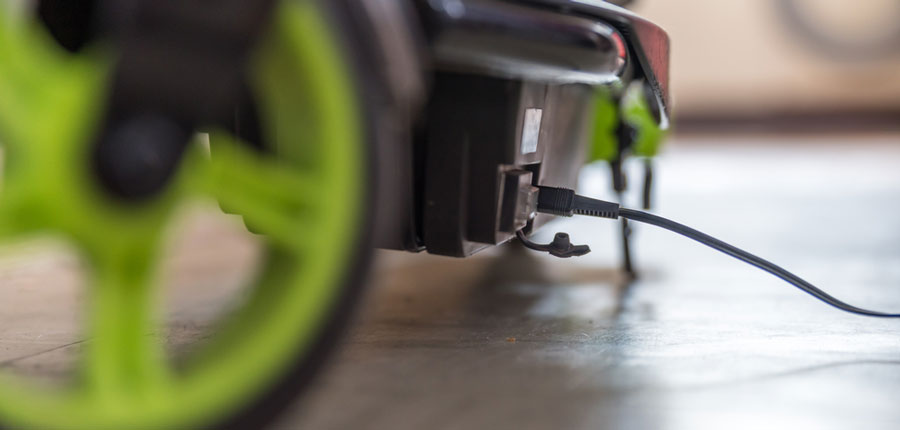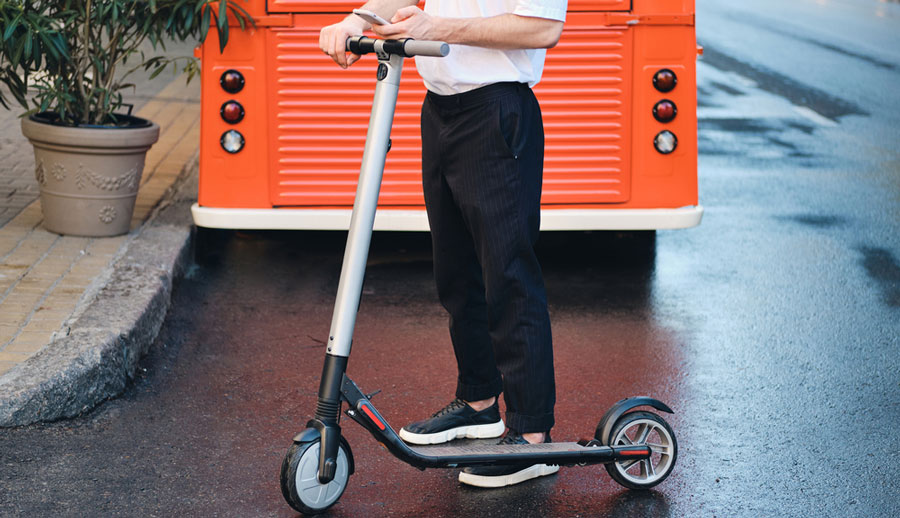Are Electric Scooters Reliable?
With the UK government currently testing electric scooters, it’s clear that they’ve got huge potential to change how we travel to work, Uni or just to meet up with friends. But can they be trusted to get us there on time and are these electric scooters reliable?
In this guide we’ll be looking at how reliable e-scooters are, what can go wrong and how you can protect yourself.
Can you rely on an e-scooter for your work commute?

If your job is anything like mine have been, your boss likely won’t take ‘my scooter ran out of charge’ as an excuse. So how reliable are electric scooters as a serious way to commute to work? Here are some things to think about:
- What’s the surface like? If your journey is a nice, flat urban style surface, you’re fine with an e-scooter.
- It could get a puncture – If your scooter has air tyres, you could be late for work if you puncture a tyre on the way.
- How far is your work? Shorter trips can lend themselves well to e-scooters. If you’re only a few miles from your work then they’re a no-brainer.
- How much weight are you carrying?
Verdict: An electric scooter is a reliable way to get to work, especially if you don’t live that far away. The ability to hop on and hop off and store it anywhere makes it a good choice for your daily commute.
Let’s talk about parking
Unless you live out in the sticks, finding a parking space in even a local town can be a nightmare in the run-up to 9 am. One of the best things about electric scooters is that you can rely on getting there in time as you don’t have to figure out where to park.
Like bikes, electric scooters can be chained up outdoors or you can simply take them into the office or wherever you’re going with you.
What can go wrong with an electric scooter?
(Most common problems)
It can rain
Who’d have thought a bit of UK weather could put pay to your plans to scoot to work. But, as we discussed in a previous article on TrendyRide, things like electric bikes and scooters don’t really like the rain. You can get around this by picking a scooter that’s more waterproof, however.
You can run out of charge

As you personally don’t normally have to charge the train prior to each journey, forgetting to do so won’t mean you’re late for work. As there’s not currently any way to really fast charge a scooter, one cross in the reliability checkbox is that it will only work if you’ve got enough juice in it.
So long as you’re disciplined or have a good routine of plugging it in, you’ll be fine.
You can get a flat
Even on a smooth urban surface, there are all kinds of things that could wreak havoc on an unsuspecting e-scooter driver’s tyres. (We’re mainly talking about air-filled tyres here).
There’s a surprising number of ways an air-filled tyre can unexpectedly go flat. Everything from over-pumped tyres to objects on the road like stray screws and glass can make for a late appointment.
Other technical problems
So what are the main problems with e-scooter reliability? Here are the main reported problems with e-scooters.
- Tyre and wheel issues – Tyres wearing out or innertube punctures
- Brake problems
- Fenders breaking
Things like the display, motor, battery and controller are far less likely to break down.
How reliable is an e-scooter compared to other transport?

So, we’re spending a lot of time with this guide poking at the problems and the things that can go wrong with electric scooters, but let’s not forget other popular forms of transport. Here are some pros and cons compared to e-scooters
The bus or train
The average person spends around 27 days of their life waiting for a train or a bus. Almost a month waiting around in the cold for your ride to show up. With e-scooters, there’s none of that. You’re good to go as soon as the wheels hit the ground.
Scooters win because: There’s no waiting around and you’ll likely get there faster by using a more direct route. Buses tend to literally go ’round the houses’ which takes a long time.
Bus wins because: They’ll get you there if it’s raining.
Cars and car pools
Scooters win because: One of the pains with carpools is that you have to wait for everyone to be there before you set off. As there currently aren’t many scooters that hold more than one person, you have the perfect excuse to head off as soon as you’re ready.
Cars win because: That feeling when it’s raining – or even snowing outside – and you get in your car and shut the door, whack the heater on and drive home all snug. While scooters are the way to travel when it’s good weather, you’ll likely wish you had a roof over your head come the darker UK nights.
Bikes and electric bikes
Electric scooter wins because: They’re more portable. If you live in an apartment with stairs or a lift, they’re super easy to carry up and down. Similarly, at work, you can always carry your scooter and stow it somewhere easily.
Another thing to consider is with an e-scooter you’ll arrive at work fresh as a daisy whereas all that peddling might get you a bit sweaty.
Bikes win because: It’s hard to match the speeds you can get to with a bicycle on an e-scooter. And if your electric bike runs out of charge, you can still pedal it just the same.
How do you get your scooter fixed if something does go wrong?
Although scooters are generally a reliable way to get around, there’s always stuff that can go wrong. So what do you do to get your e-ride back up and running?
Halfords can change tyres (normally) very quickly
Some of the more common problems with a scooter you can take care of pretty easily. Replacing worn tyres is usually just a case of taking it to your local Halfords, or Pure Electric if there’s one near you. Some cycle shops will do it for you too.
Depending on the store, there might be a waiting list, or it could be next day pickup. Worth keeping in mind and it’s always best to get word tyres sorted ASAP.
But electric scooters have a lot of parts that can break and will need to be repaired or replaced by the manufacturer. Check what the warranty is.
Final tip: Picking a reliable scooter
At the end of the day, not every scooter is reliable. We’ve seen the ‘big brands’ scooters arrive only to be marred by hardware problems or software glitches. Pick a retailer with a solid return policy so you’re covered if something does go wrong.
5 tips to help make your scooter more reliable

- Get some slime! – Punctures happen and they’re not a lot of fun. Slime is some goo you can apply into the innertube that will fix most pesky punctures and let you continue your journey.
- Get a phone holder – If you’re planning on using your e-scooter to get around or use it for work, a phone holder will let you use something like google maps more easily.
- Don’t go too cheap – About the best thing you can do to make your scooter more reliable is to pick a good one, to begin with. The market is flooded with cheaper knock-offs but getting a scooter with good reviews, or a good brand name behind it will save a lot of pain down the line.
- Get solid tyres for city driving – If you’re doing a lot of commuting in a busy city, you might not be able to avoid the broken glass someone kindly left from the night before. Solid tyres might be your new best friend, in this case, allowing you to keep going and avoid a puncture you’d get with air-filled ones.
- Pick up a lock – It’s actually not difficult (or expensive to lock up your kick scooter when you go to a shop, college or work. There are some decent locks for around the £10 price point like this one at Amazon.
Final Thoughts: Are e-scooters really a reliable way to get around?
Electric scooters offer a cool, portable and convenient way to get to important (or fun) destinations. Like any transport, they’ve got their limitations.
Things like bad weather, a puncture or poor road conditions might mean you’d be better off with something like a bike.
But they’ve got some serious advantages too. On the whole, an electric scooter is a highly reliable form of commuting, especially for shorter distances, in places where there’s less rain.
References and Further reading
- Evans Tire – Most common causes of a flat tyre